Market
Our Experience
Newark Liberty International Airport Terminal A
Newark, NJ
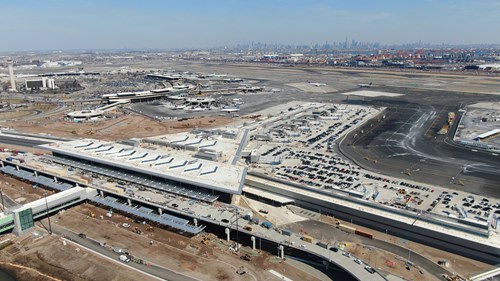
Tutor Perini/Parsons is the Lead Design-Build Contractor for construction of Newark Airport Terminal A, which involves design and construction of a new 1,000,000-square-foot, 33-gate common-use terminal building and ramp; a fully enclosed, elevated pedestrian walkway; the N60 bridge; and related infrastructure.
The new terminal includes dining, retail, and other amenities and is slated to be fully operational in 2022. A pedestrian bridge will be constructed with moveable walkways, cover, and a heating, ventilation, and air conditioning (HVAC) system. The new Terminal A is being constructed to the south of existing Terminal A. The project will provide passengers with a world-class customer experience, create jobs, and boost the region’s economy.
Intended to operate as a common-use facility with organized and efficient passenger processing, Terminal A will provide passengers with curbside check-in as well as a complete range of check-in options in the ticketing lobby, including self-service kiosks with self-tag and self-drop for baggage, staffed full-service check-in podiums, and dedicated airline check-in areas for premium passengers. An expandable security screening checkpoint provides increased passenger queue space with dedicated lanes for premium passengers, crew, and physically-challenged travelers. The infrastructure serving these operations will adapt to changing and future processing requirements.
Harry Reid International Airport Terminal 3
Las Vegas, NV
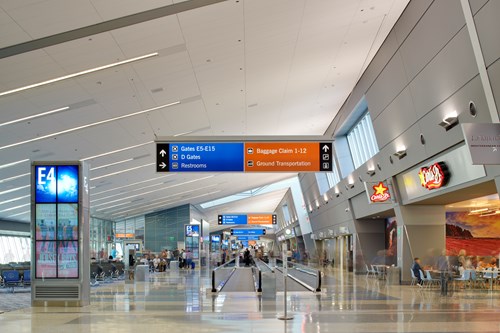
This 1.9-million-square-foot terminal building at Harry Reid International Airport (formerly McCarran International Airport) provides 14 gates, including seven international swing gates. The terminal also offers facilities to accommodate an existing 30-gate concourse that is linked by an ATS people mover.
Designed to integrate a variety of aircrafts, including wide bodies, the international gates serve as swing gates, providing additional domestic gate capacity as needed. The Federal Inspection Services (FIS) facilities are designed to process arriving international passengers at a rate of 1,600 passengers per hour with a design that incorporates elements from the U.S. Customs and Border Protection’s ‘Model Ports of Entry’ program, as well as Global Entry expedited processing.
The design features multiple security screening checkpoints and baggage claim devices that serve both international and domestic operations. Serving a total of 44 gates, the new terminal facilities include ticketing, security screening checkpoints, outbound baggage operations with in-line EDS screening, inbound baggage and baggage claim facilities, concessions, and airline support. The terminal is further supported by a new roadway system and parking structure.
Fort Lauderdale-Hollywood International Airport
Multiple Projects - Fort Lauderdale, FL
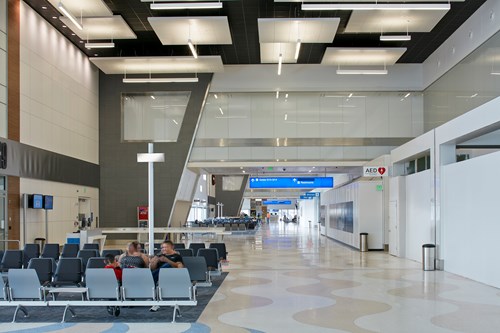
Tutor Perini has completed multiple projects for the modernization efforts at FLL, including the following projects at Terminal 4: Gate Replacement - Western Expansion, Federal Inspection Services Renovation and Expansion Tasks 1 & 2A, Federal Inspection Services Tasks 2B & 3, and an Apron Extension. In addition to Terminal 4 projects, we have also completed the Airport Runway Expansion and Multi-Cell Bridge Structure, the Revenue Control Plaza, the Consolidated Rental Car Facility, earlier Federal Inspection Services projects, the Hibiscus Parking Garage, and earlier work on the West & Northwest Concourses.
The Terminal 4 Gate Replacement – Western Expansion project involved the construction of an approximately 228,062-square-foot, six-gate concourse expansion similar in size to the proposed RPT Terminal. Preliminary phases included the conversion of existing concessions areas to an interim security screening checkpoint (SSCP), the demolition of the structure that houses the existing SSCP, and the re-routing of existing underground utilities within the proposed building footprint. The scope also included a secure connector between Terminal 3 and Terminal 4, modifications to Terminal 3 to accommodate the connection, a sterile corridor system (including interior bridges and vertical circulation cores), shell spaces for new offices for the Broward County Aviation Department, a new permanent SSCP, and a new outbound baggage handling system – many of the same elements required for the proposed RPT Terminal. The project required close coordination with other projects that were being constructed concurrently by others, including: terminal apron reconstruction (constructed by Tutor Perini under a separate contract), and modifications to site utilities including the hydrant fueling system.
Airport Runway Expansion and Multi-Cell Bridge Structure was a Design-Build project that consisted of the expansion and elevation of an existing runway to an overall length of 8,000 feet and width of 150 feet, and the construction of runway and taxiway structures over U.S. Route 1, the Florida East Coast Railway and the airport’s east Perimeter Road. This contract consisted of architectural design, civil, drainage, traffic, environmental, geotechnical, structural, mechanical and electrical services to provide for two multi-cell bridge structures with a combined deck area of approximately 556,000 square feet.
AirTrain Terminal at Jamaica Station
Queens, NY
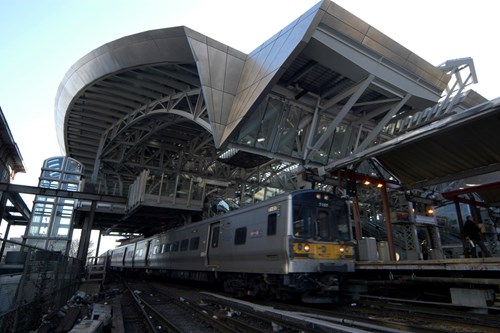
The $381 million project included the construction of the 280,000 square-foot multistory intermodal station complex connecting JFK AirTrain, Long Island Rail Road (LIRR) commuter rail, and NYC subway and bus systems. The station serves 200,000 passengers, with 500 trains passing through the station daily. The project included the erection of a massive steel portal structure within an operating commuter rail right-of-way (LIRR) and operating transit (NYCT) and bus systems.
JFK International Airport Runway 4L-22R Rehabilitation
Queens, NY
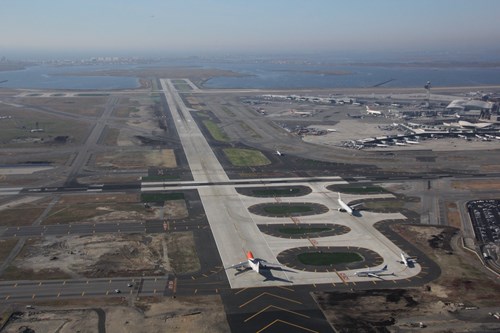
This project included the rehabilitation and extension of Runway 4L-22R. The existing asphalt runway was milled six inches deep and topped with a two-inch asphalt leveling course. The runway was then overlaid with 18 inches of Portland Cement Concrete Pavement (228,000 cubic yards). The runway was widened by 50 feet and extended by 700 feet. The finished product was a 12,700-foot-long by 200-foot-wide runway with 40-foot-wide shoulders that handle about 25 percent of the annual operations of the airport.
JFK International Airport Runway 13R/13L Reconstruction
Queens, NY
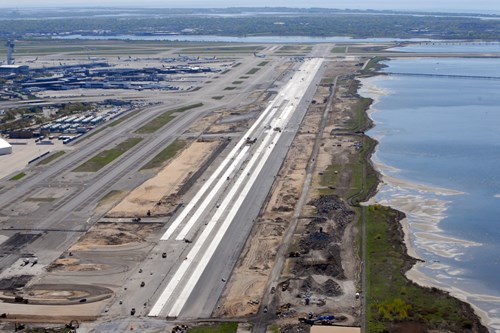
This project was part of the JFK Delay Reduction Program. At 14,572 feet, the runway is one of the longest in the nation and handles one-third of the airports annual operations. The project will widen the runway from 150 to 200 feet, includes milling six inches of existing runway asphalt and overlaying with 18 inches of concrete, widening taxiway intersections and creating greater taxiway access to enable more efficient aircraft movements; installing new runway lighting and electrical infrastructure; and installing new electrical feeder systems and accommodations for future navigational aids.
JFK CTA RUGTC
- Tutor Perini Corporation
- About Us
- Our Experience
- Opportunities
